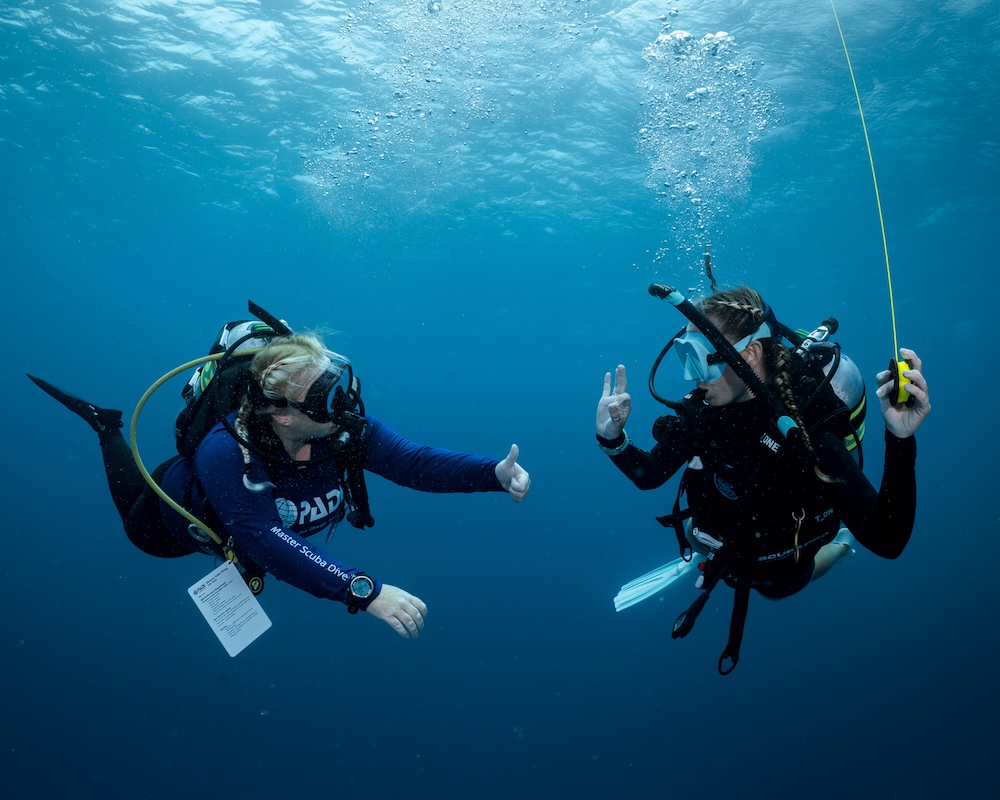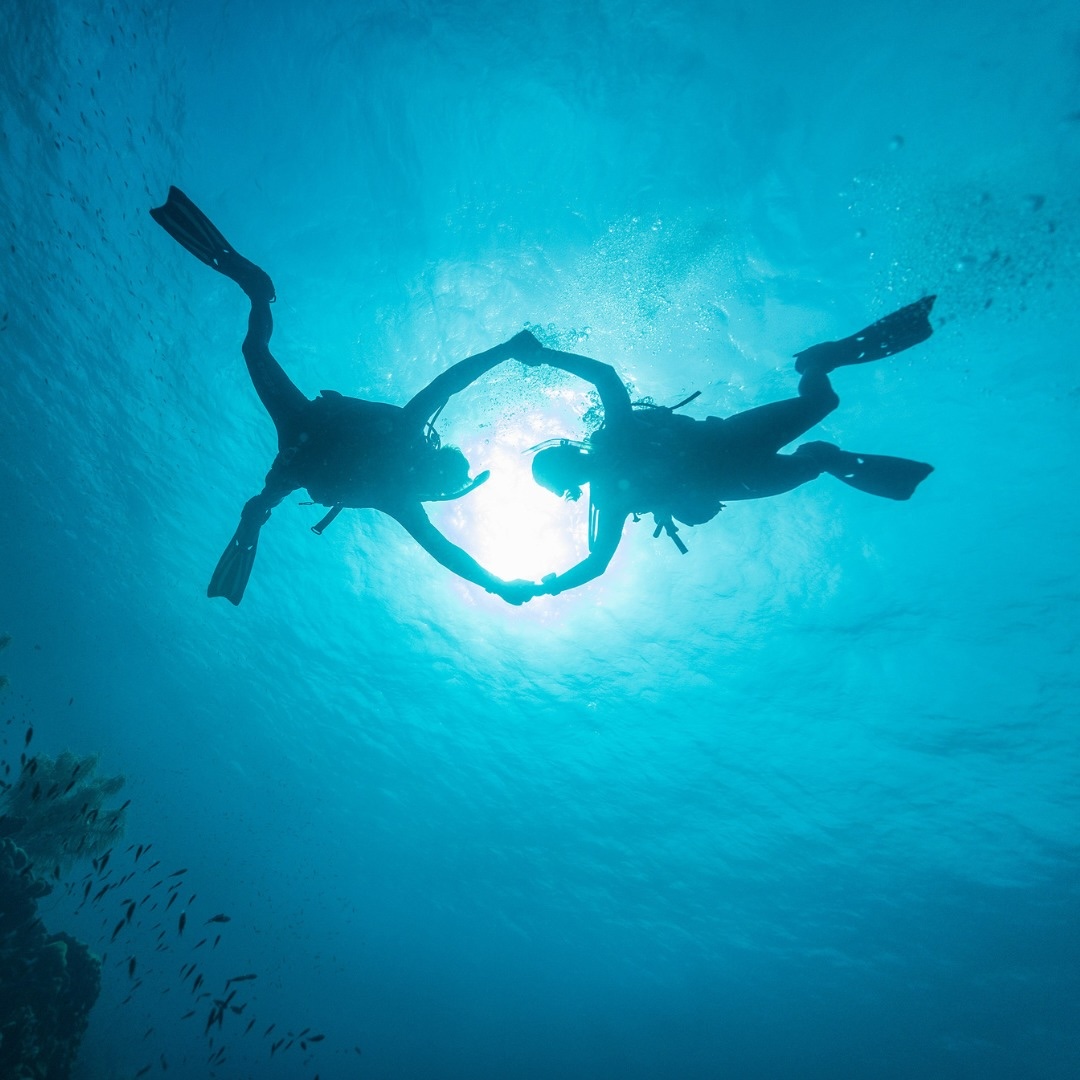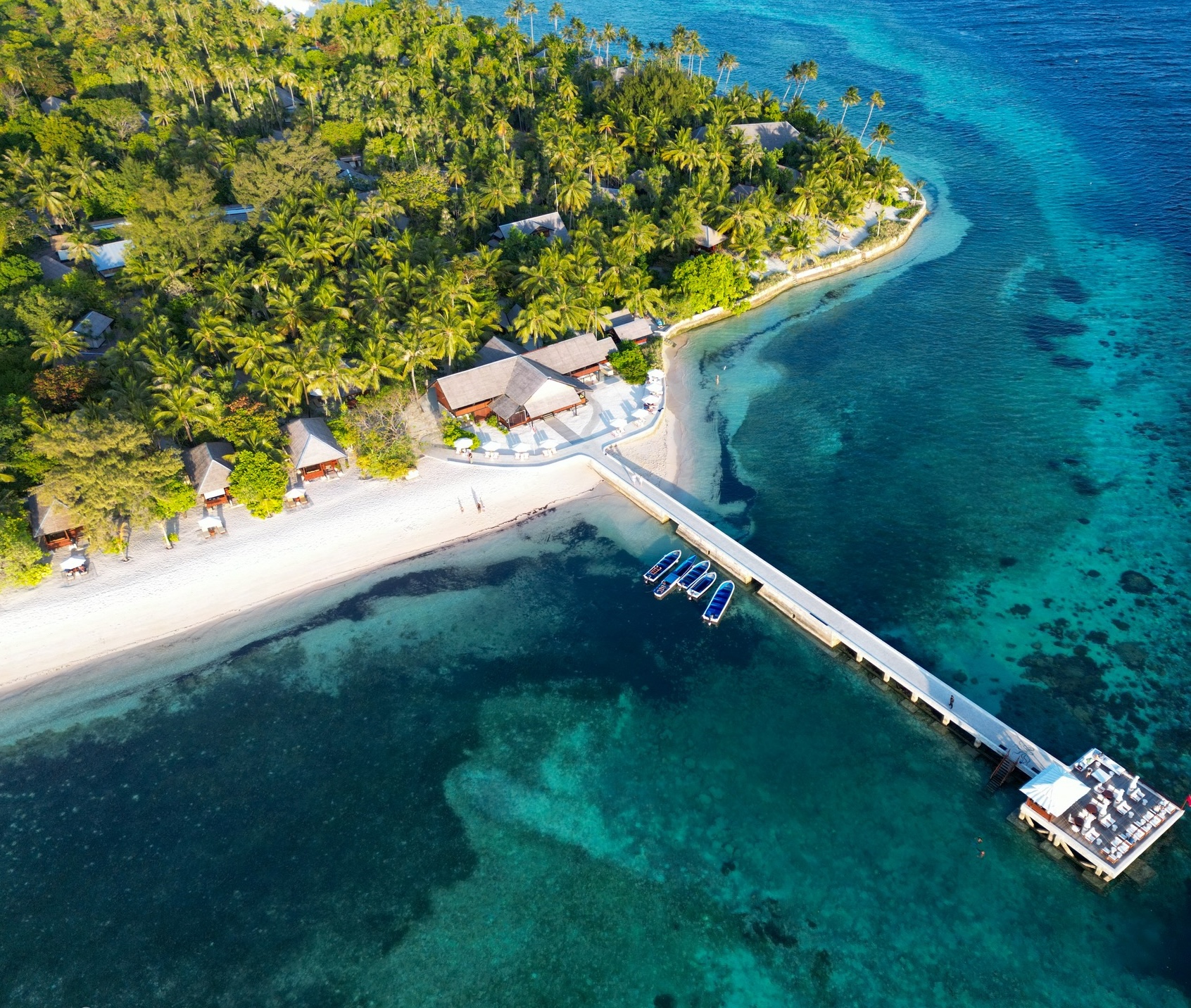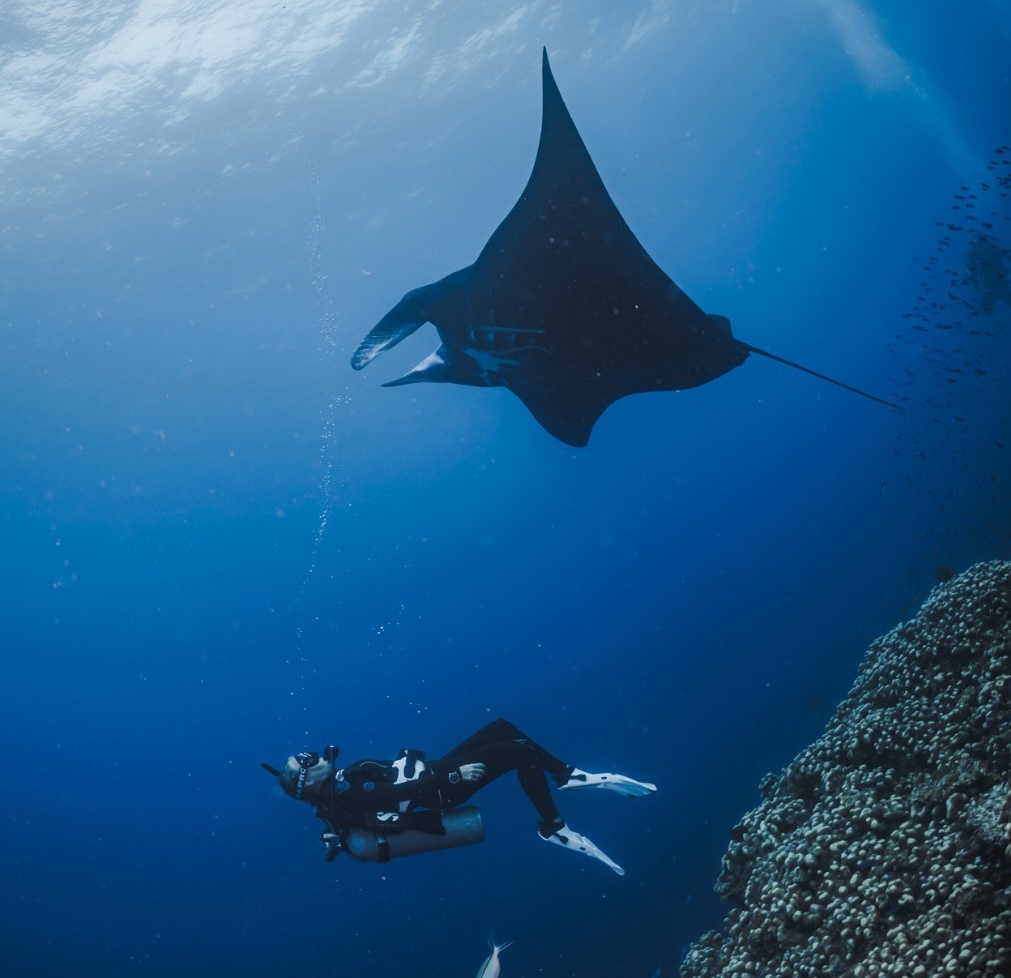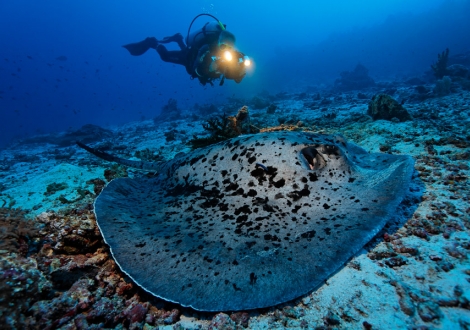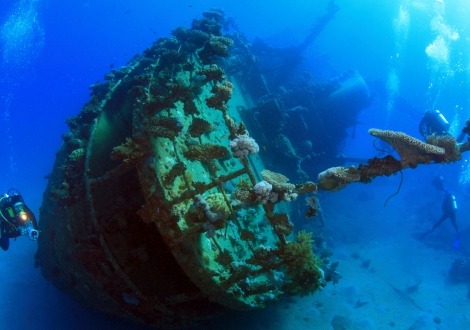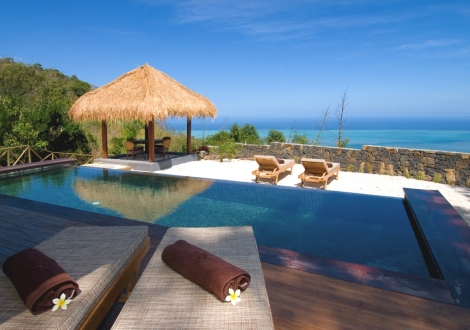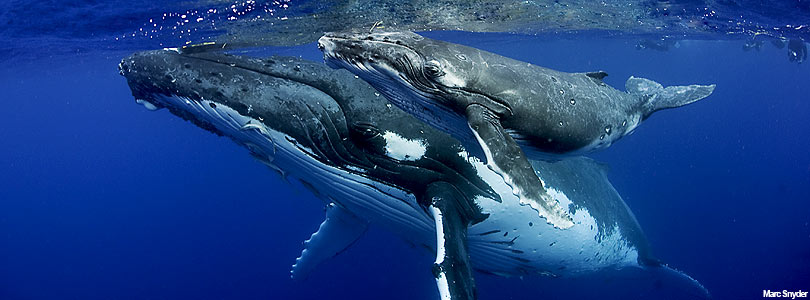Diving Holidays in Mexico may be off the Caribbean coast, around the Yucatan Peninsula, or off the Pacific coast around Baja California and the oceanic Revillagigedo Islands, accessible only by Mexican Liveaboard.
Extending south from California the peninsula of Baja California slices off a slither of the Pacific Ocean creating a semi enclosed sea. The Sea of Cortez, bordered to the west by Baja California and to the east by the Mexican mainland, is open at its southern end permitting nutrient rich Pacific waters to flow in.
As the Pacific waters meet the hundred or so irregularly scattered small islands and sea mounts, rising out of the deep waters, the resulting upwelling supports an abundance of marine mammals and fish life, including the large pelagics. Whale sharks, schooling hammerheads, giant Pacific mantas are regulars. Inshore, granite reefs form grottos, arches, caves and swim throughs. Spotted with soft corals they support various species of reef fish and are the resting place for the occasional wreck. One memory you are sure to take home is of the sealion colonies and having these extraordinary creatures play amongst you as you dive.
Mexico boasts some of Central America's finest beaches, some of the most luxurious resorts, a rich culture and spectacular historical sites. Off the eastern Caribbean coast the sun-drenched Yucatán Peninsula is dotted with ancient Mayan sites such as Chichen Itza.and Tulum, situated on a low cliff besides the Caribbean Sea.
Less well known is Mexico's Baja California encloses the Sea of Cortez (aka the Gulf of California). In the 40's John Steinbeck wrote of his time collecting marine specimens here and on first sight little has changed.
Planet arranges holidays and tours in the Yucatán Peninsula, a stunning region in southeastern Mexico, extending into the Gulf of Mexico and the Caribbean Sea. It encompasses three Mexican states—Yucatán, Campeche, and Quintana Roo. This area of Mexico is very safe as well as being known for its unique geography, cultural richness, and natural beauty.Geography and Natural Features
The peninsula is characterized by its flat terrain and limestone foundation, which gives rise to its most famous natural features: cenotes, or freshwater sinkholes. These cenotes were formed by the collapse of underground caves and are connected by vast networks of subterranean rivers. The region is also home to lush jungles, coastal wetlands, and pristine beaches along the Riviera Maya and Costa Maya.
Mayan Heritage - The Yucatán Peninsula is a cradle of ancient Mayan civilization. It boasts significant archaeological sites like Chichén Itzá, a UNESCO World Heritage Site and one of the New Seven Wonders of the World; Uxmal, known for its intricate Puuc architecture; and Tulum, a picturesque coastal city overlooking the Caribbean. Many of these sites reflect the Mayan people's advanced understanding of astronomy, mathematics, and architecture.
Modern-Day Culture - The region is a vibrant blend of Mayan and Spanish colonial influences. Cities like Mérida, the capital of Yucatán state, are known for their colonial architecture, lively festivals, and local cuisine, such as cochinita pibil and sopa de lima. Quintana Roo, home to Cancun and Playa del Carmen, is famous for its resorts, nightlife, and coral reefs, including the Mesoamerican Barrier Reef, the second-largest in the world.
Ecotourism and Biodiversity - The peninsula is a haven for ecotourism, offering activities like snorkelling, scuba diving, birdwatching, and exploring wildlife reserves. It hosts diverse ecosystems that support species like flamingos, jaguars, and marine life including whale sharks and sea turtles.
Weather and Climate - The Yucatán Peninsula has a tropical climate with warm temperatures year-round. The dry season, which is also the wind season (November to April), is ideal for travel, while the wet season (May to October) brings lush greenery and occasional hurricanes.
The Yucatán Peninsula offers a blend of history, adventure, and relaxation, making it an unforgettable destination for travellers seeking amazing ocean sports on or under the water, culture and natural beauty.
Off the eastern Caribbean coast the sun-drenched Yucatán Peninsula is dotted with ancient Mayan sites such as Chichen Itza. Off shore the Mesoamerican Barrier Reef stretches from Isla Contoy down to Belize and the Bay Islands of Honduras beyond. In land there is world-class cavern and cave diving in the cenotes.
Diving Baja california is possible from Los Cabos but best done from La Paz. Accessed by liveaboard, some 250 miles off Baja California’s southern tip, are the Islas de Revillagigedo, a group of uninhabited volcanic islands the largest being Socorro Island.
When planning your trip, we recommend that you find out about the weather in the state you will be visiting, in order to know what clothes to pack. Many people assume that the climate is always warm in Mexico; but the reality is that it may vary greatly from one destination to the next.
The weather in Mexico is as varied as its geography: there are tropical forests, arid desserts, fertile valleys and snow covered mountain peaks. The coasts are generally warm throughout the year, although it is very rainy during some months. In Mexico City, the weather is quite pleasant, neither too hot nor too cold. In the central highlands, the weather is cool, as well as in the mountainous areas. In some northern states, such as Monterrey and Chihuahua, it is very hot in summer and extremely cold in winter. Before traveling to Mexican beaches, make sure it is not hurricane season.
Mexico is one of the countries with the largest cultural tourism in the world. This country’s cultural, geographical and historical wealth can only be appreciated through its tourist destinations, its cuisine, its architecture, its traditions and everything that constitutes the being of a people.
Learn about the vast range of archaeological sites around the country. Marvel at Tulum, Chichen Itza, Palenque or Monte Alban, some of these sites have been named World Heritage Site by UNESCO.
Enjoy the handicrafts produced in some of Mexico’s cities, where the creation processes have not changed for centuries, and are handed down from one generation to the next. Admire the black clay object made in Oaxaca, the musical instruments made in Paracho, Michoacan, the leather goods manufactured in Guanajuato and the colorful handicrafts made by indigenous people like the Huichol Indians.



 Nassau
Nassau
